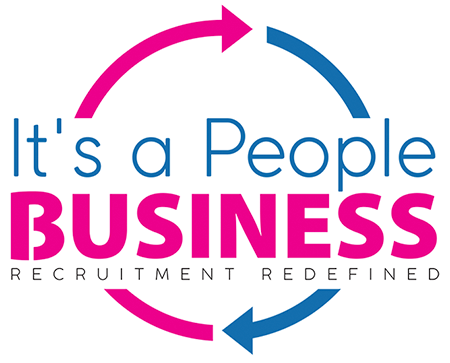
Attracting and retaining a diverse workforce is not only important for the success of a business, it is also crucial for building a strong and inclusive workplace culture. With the world becoming increasingly diverse, companies that fail to cultivate a workplace that values and respects diversity risk being left behind in terms of innovation, productivity, and profitability. The benefits of a diverse workforce are numerous, including increased creativity, improved decision-making, and better problem-solving. However, creating a diverse workplace is not as simple as hiring a few people from different backgrounds. Attracting and retaining a diverse workforce requires a concerted effort to address biases, create an inclusive culture, and actively seek out candidates from underrepresented communities.
Create greater innovation, creativity, and productivity, as well as a stronger sense of community and belonging among employees.
In this blog post, we will delve into pragmatic approaches for both enticing and maintaining a workforce characterized by diversity. We will delve into the significance of crafting job descriptions that embrace inclusivity, tapping into a wide array of recruitment channels, offering pertinent training and developmental prospects, and nurturing a corporate culture that deeply values diversity and inclusion. Through the application of these tactics, businesses can allure and retain a multifarious cadre of employees who will enrich the workplace with their distinctive viewpoints, proficiencies, and life experiences. Consequently, this infusion of diversity can catalyze heightened levels of innovation, creativity, and productivity, whilst fostering a more robust sense of community and belonging among the workforce. In the grander scheme, cultivating a diverse workforce is not only an ethical imperative but a strategic necessity for the prosperity and expansion of any organization in today's interconnected global landscape.
1. Foster a welcoming workplace culture.
1. Foster a welcoming workplace culture.
A pivotal strategy for both attracting and retaining a diverse workforce revolves around nurturing an inclusive and welcoming workplace culture. This entails the creation of an environment wherein every employee experiences a deep sense of value, respect, and support. While inclusive hiring practices and the initiation of Diversity, Equity, and Inclusion (DEI) initiatives represent essential steps towards cultivating such a culture, they constitute just the initial strides. Employers must, therefore, place an unwavering emphasis on continuous education and training for both managers and employees, delving into areas like unconscious bias, microaggressions, and cultural competence.
Regularly solicit feedback from employees about the workplace culture and act on their suggestions.
Furthermore, it is imperative to consistently seek input from employees regarding the workplace culture and proactively act upon their suggestions. Through a steadfast commitment to fostering a welcoming and inclusive workplace culture, employers can not only attract but also retain a diverse workforce, one that feels profoundly valued and empowered to contribute to the organization's overarching success. In doing so, they fortify the foundation of a thriving, united, and dynamic workplace.
Read More:How to Use Social Media to Recruit and Engage Top Talent
2. Offer diversity and inclusion training.
2. Offer diversity and inclusion training.

Inclusive hiring practices and DEI (Diversity, Equity, and Inclusion) are critical components for attracting and retaining a diverse workforce. To achieve this goal, it is essential to offer diversity and inclusion training to help employees understand the value of a diverse and inclusive workplace. This training should educate employees on how to recognize and address unconscious biases, foster healthy communication, and promote a culture of respect. By offering diversity and inclusion training, organizations can help their employees develop the skills and knowledge necessary to work effectively with a diverse range of colleagues and customers.
Read More: Outsourcing vs. In-House Hiring: Which is Right for Your Business?
Additionally, this training can promote a culture of accountability, where employees are encouraged to hold themselves and others accountable for creating an inclusive workplace. Overall, offering diversity and inclusion training is an important step towards creating a workplace culture that welcomes and supports all employees, regardless of their background or identity.
3. Create opportunities for career advancement.
3. Create opportunities for career advancement.

In the pursuit of an inclusive workforce and the advancement of Diversity, Equity, and Inclusion (DEI) initiatives, it is paramount to recognize that attracting and retaining diverse talent is just the beginning. Equally essential is the creation of avenues for career progression, encompassing accessible training and development programs for all employees, not exclusively those in leadership roles. Additionally, offering mentorship and sponsorship opportunities to underrepresented groups is vital, acknowledging the unique challenges they may confront while navigating the corporate hierarchy.
Offer mentorship and sponsorship opportunities to underrepresented groups.
Prioritizing career advancement for every employee becomes the cornerstone of a corporate culture founded upon inclusivity and equity. In such an environment, each member of the workforce is afforded the prospect to thrive and flourish, promoting a sense of unity and ensuring that the organization harnesses the full spectrum of its employees' potential. In essence, the commitment to not only diversify but also to enable the advancement of a diverse talent pool shapes a workplace culture that fosters inclusivity, equity, and sustainable success.
4. Provide equal benefits and compensation.
4. Provide equal benefits and compensation.

In the quest to attract and retain a diverse workforce, inclusive hiring practices and a commitment to Diversity, Equity, and Inclusion (DEI) are indispensable pillars. Achieving these objectives necessitates the implementation of equitable compensation and benefits policies for all employees. Establishing a transparent system that values every employee equally, regardless of their gender, race, or any other personal characteristic, is paramount. Such an approach cultivates a culture rooted in fairness and respect, essential for retaining top talent within the organization.
Foster a more positive and productive work environment.
Foster a more positive and productive work environment.
Moreover, it is imperative for companies to institute unambiguous guidelines for promotions, with merit and qualifications as the sole determinants, eschewing personal connections or biases. By affording equal opportunities for growth and development, companies can nurture a workplace characterized by positivity and productivity, resulting in heightened job satisfaction and diminished turnover rates. Ultimately, the creation of an equitable workplace where all employees feel esteemed and respected emerges as a linchpin for the attraction and retention of a diverse and highly skilled workforce.
5. Encourage diverse hiring practices.
5. Encourage diverse hiring practices.

Employers aspiring to build and retain a diverse workforce must place inclusive hiring practices and Diversity, Equity, and Inclusion (DEI) initiatives at the forefront of their efforts. An effective blueprint involves proactively fostering diversity through targeted initiatives aimed at attracting individuals from underrepresented groups. This can entail forging partnerships with organizations dedicated to diversity and inclusion, publicizing job openings in media outlets and platforms that cater to minority communities, and actively engaging with potential candidates via social media networks.
Ensure that all candidates are evaluated based on their skills and qualifications.
Furthermore, employers can enhance fairness in the hiring process by eradicating biases from job descriptions and interview questions, offering training programs to sensitize hiring managers to unconscious bias, and ensuring that all candidates are assessed solely based on their skills and qualifications. These concerted efforts pave the way for heightened diversity within the workforce and the creation of an all-embracing and hospitable workplace culture, ultimately enriching the organization as a whole.
Conclusion
Conclusion
Attracting and retaining a diverse workforce is not only the right thing to do but also makes good business sense. Companies that prioritize diversity and inclusivity create a culture that attracts top talent, improves employee morale, and increases productivity and innovation. It is important to recognize that diversity goes beyond ethnicity and gender and includes differences in age, ability, religion, and sexual orientation. By implementing strategies such as targeted recruiting, mentorship programs, and diversity training, organizations can create a more inclusive workplace and reap the benefits of a diverse workforce.
Read More: The Benefits of Working with a Flat Fee Recruiter
For adept advice and assistance on integrating these top-level tactics, get in touch with It's a People.Business. Our proficient recruitment experts are equipped to aid you in crafting an economical and streamlined recruitment approach that falls in-line with your organizational objectives. Take the initiative and reach out to us today to uncover more about how we can help you establish a capable and cohesive team for your burgeoning enterprise.
